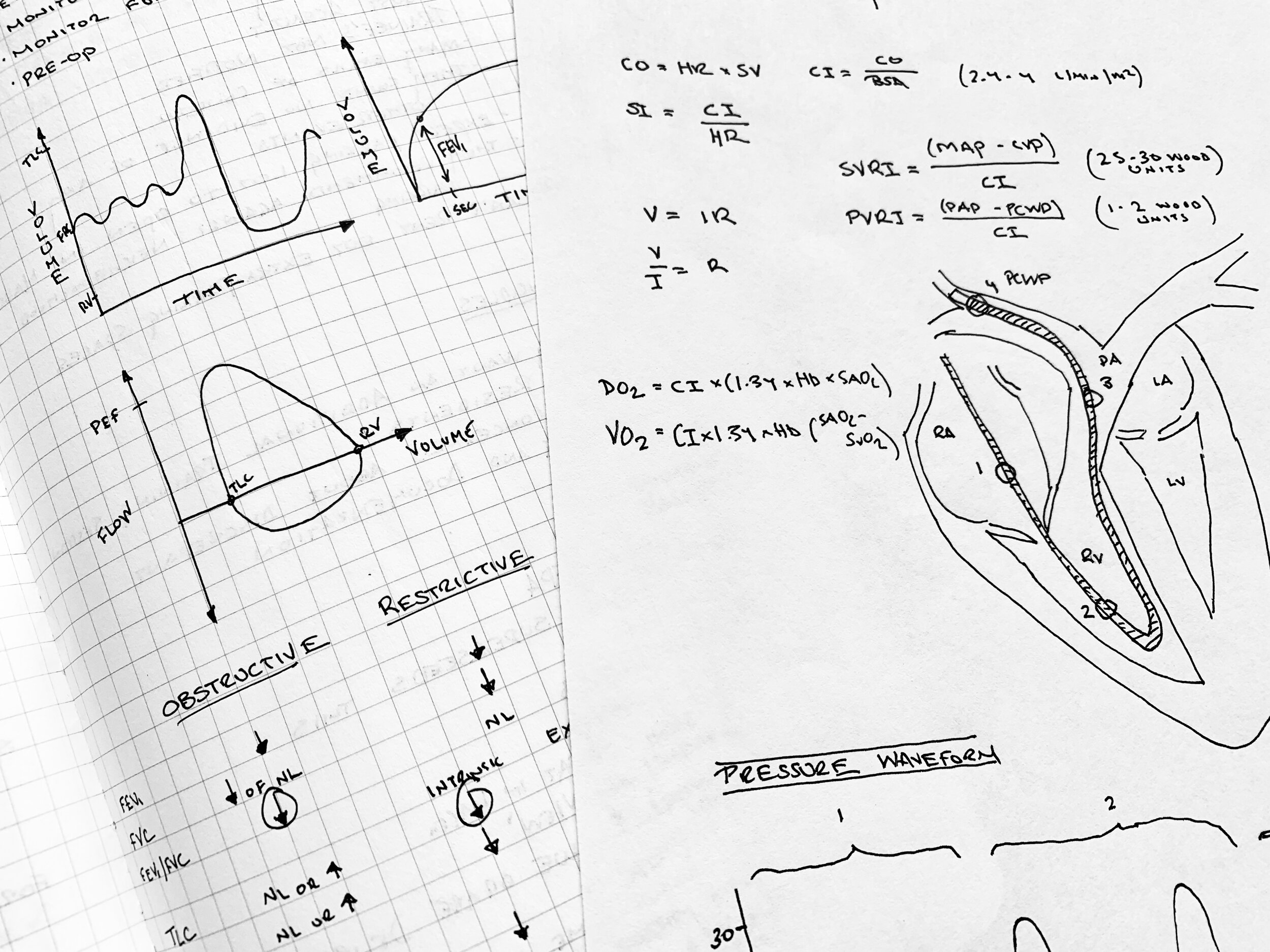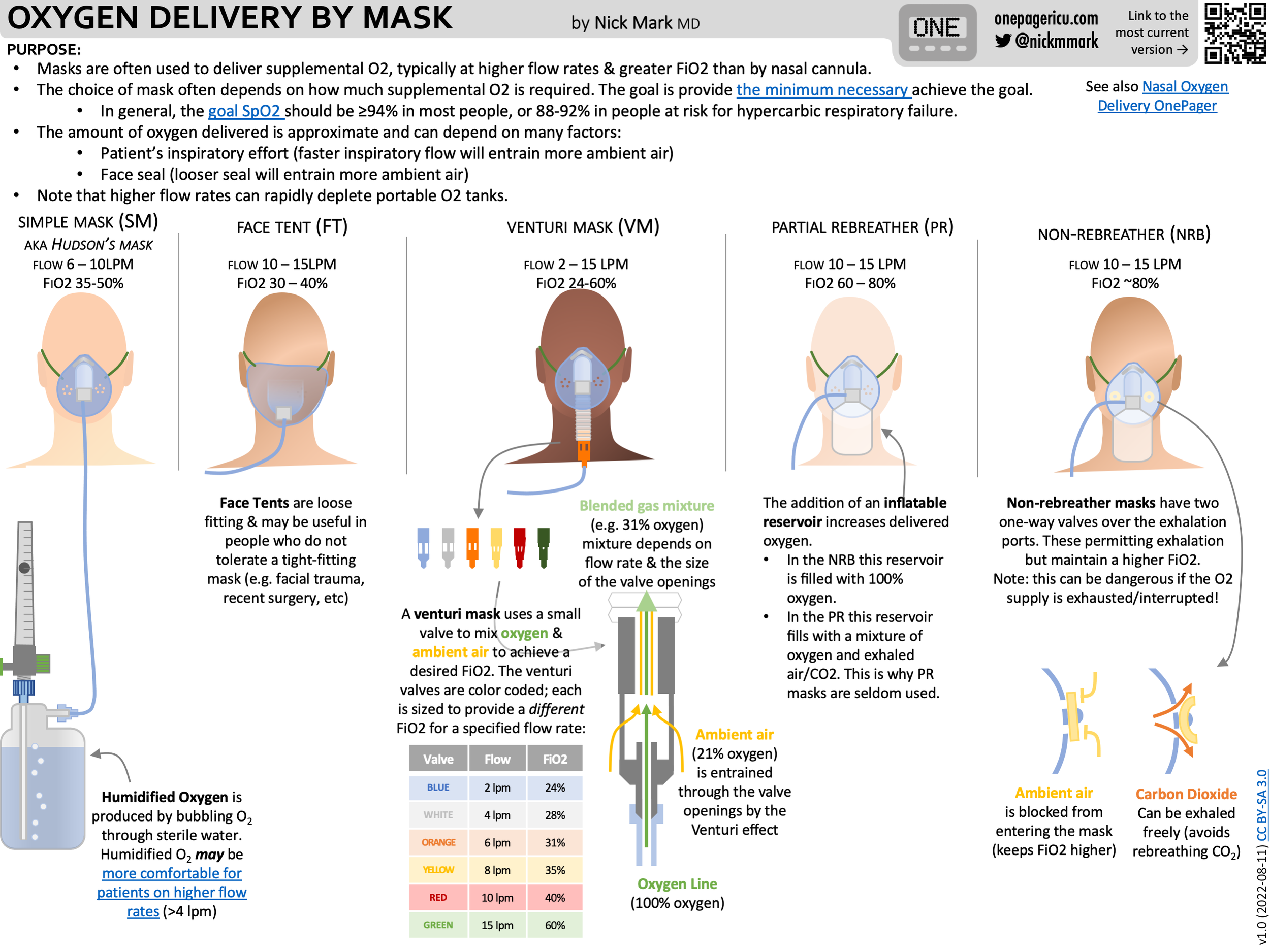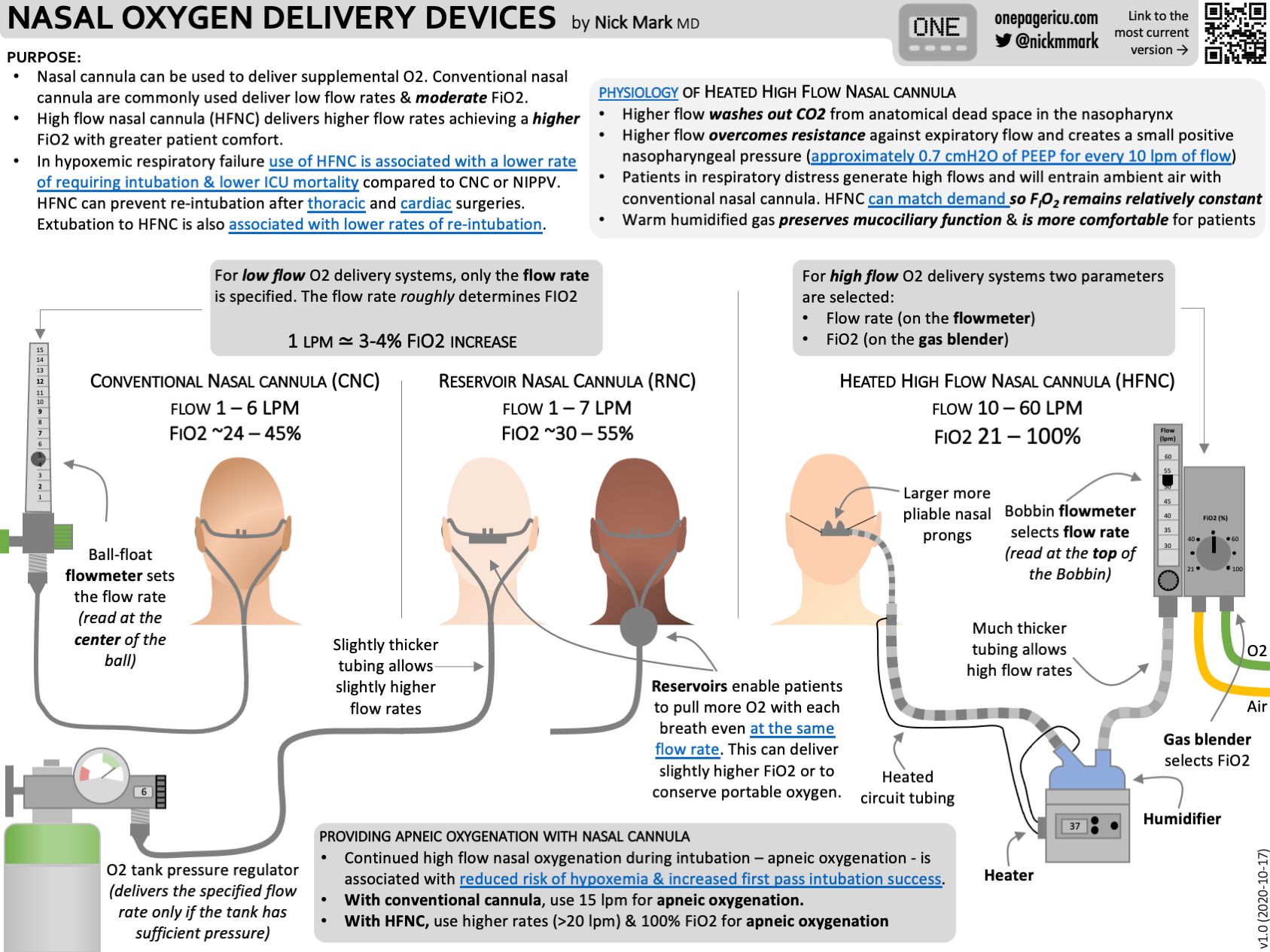
Critical care education one page at a time. Simple, free, & open source.
Nick Mark’s OnePager guides to critical care topics.
Pulse Oximetry
#criticalCare #ICUequipment #oxygenation #waveforms #monitors
We use pulse oximetry on every patient every day in the ICU, but how does this machine actually work and, importantly, how does it fail? This ICU #OnePager reviews the principle of pulse oximetry and the many factors that can cause inaccurate readings: darker skin pigmentation, nail polish, low flow states (ECMO & LVADs), and abnormal hemoglobins (MetHB, COHb, etc). It introduces the important concept of pulse ox lag-time and also shows how the waveform can provide useful physiologic clues about vascular tone/compliance.
Also available in 🇵🇹🇧🇷 Portuguese, 🏴 Catalan(PDF, PNG)
-
Racial Bias in Pulse Oximetry Measurement, NEJM 2020 (due to inaccuracy with pulse oximeters, black people are 3x more likely to have occult hypoxemia)
What Is the Effect of Fingernail Polish on Pulse Oximetry? CHEST 2003
Pulse Oximetry in Methemoglobinemia, Am J Dis Child 1989
Accuracy of two pulse oximeters at low arterial hemoglobin-oxygen saturation, Crit Care Med 1998
Increased blood glycohemoglobin A1c levels lead to overestimation of arterial oxygen saturation by pulse oximetry in patients with type 2 diabetes, Cardiovasc Diabetol 2012
Pulse oximetry: Understanding its basic principles facilitates appreciation of its limitations, Respiratory Medicine 2013
Forehead oximetry in critically ill patients: the case for a new monitoring site, Resp Care Clin North Am, 2004
Comparison of forehead and digit oximetry in surgical/trauma patients at risk for decreased peripheral perfusion, Heart Lung 2007
Photoplethysmography and its application in clinical physiological measurement, Physiology Measurement 2007
-
-
-
Current version 1.0 (originally posted 2020-12-17)
-








